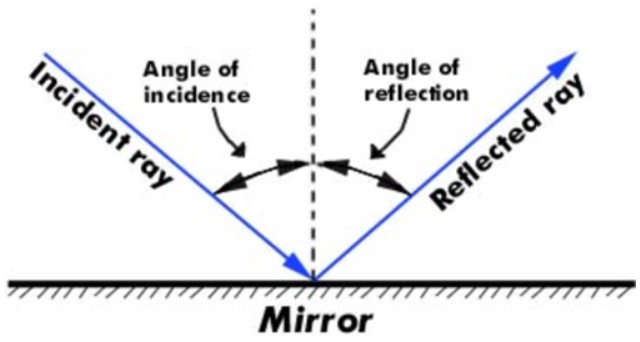In this lesson, we will learn:
- The key terms in reflection
- Types of reflection
- The laws of reflection
- Solve reflection problems
Notes:
Reflection of light: when light strikes objects, it is partly absorbed (as heat) and partly sent back (reflected)
Regular reflection Vs. Diffuse reflection
- Regular reflection: reflection of light by smooth surfaces such as mirror.
- Diffuse reflection: reflection of light by rough surfaces such. (most objects)

- Incident ray: The incoming ray of light
- Reflected ray: The outgoing ray of light
- Point of incidence: The intersection of incident ray and the boundary
- Normal: Imaginary line drawn perpendicular to the boundary at point of incidence
- Angle of incidence (< ): The angle between the NORMAL and the incident ray
- Angle of reflection (< ): The angle between the NORMAL and the reflected ray

- Laws of Reflection
- Incident ray, reflected ray, and normal all lie in the same plane called plane of incidence
- Angle of incidence equals to angle of reflection (< = < )






